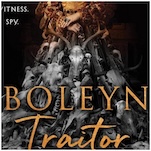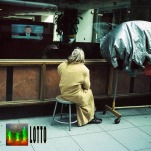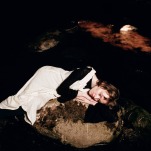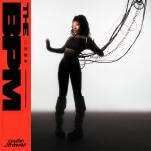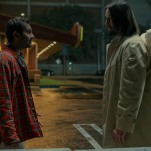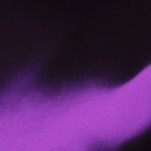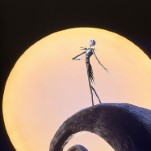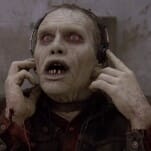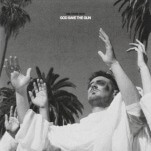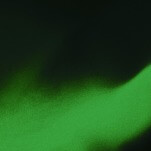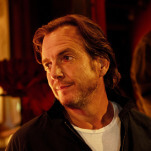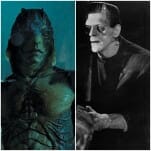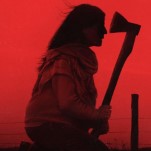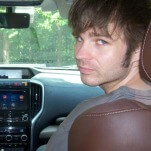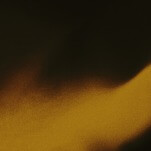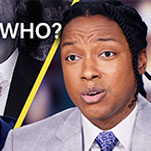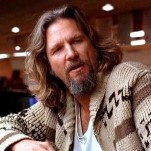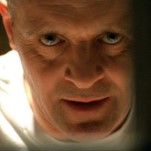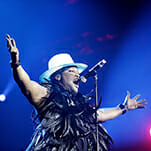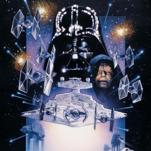Every #1 Hit From 1984, Ranked Worst to Best
A collection of soundtrack songs, cultural apexes, and career jump-starters.
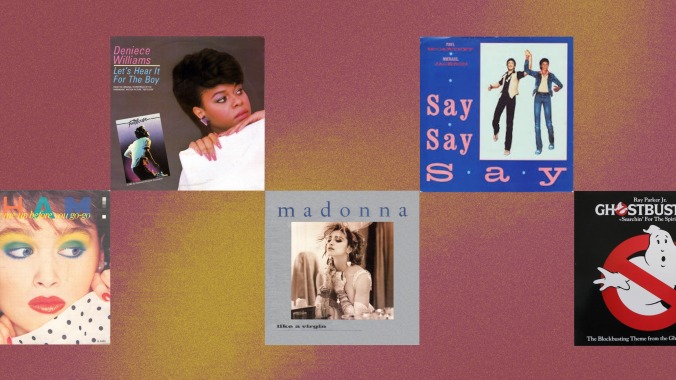
For the rest of the year, I’m ranking every Billboard #1 hit from 1964, 1974, 1984, 1994, 2004 and 2014 from worst to best in each respective year. I did this in 2023, which you can read the final entry of here (and access the previous ones), and I’m continuing the series again as we careen towards 2025.
Last week, I ranked the 1974 crop and today we’re looking at 1984, my favorite year that we’ll tackle. The ranking involves 20 songs, and 18 of them are great and about 15 of them are still in my rotation. There are no duds on this list, unless you really, really hate “Say Say Say” (and, if you do, grow up!). This is the best Top 10 we’ll have; a good measurement of how stacked 1984 was can be found in the fact that Prince’s “Let’s Go Crazy” is not one of the five best tunes of the year. ‘84 gave us a lot of soundtrack music, ballads that have permeated across four decades of culture and, of course, the first chart-topper for pop music’s greatest female act of all time. Without further ado, here is every #1 hit from 1984, ranked from worst to best.
20. Lionel Richie: “Hello”
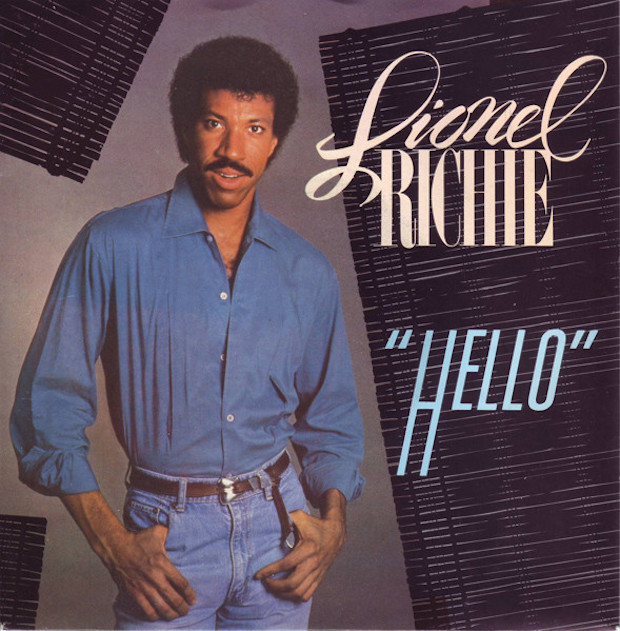 Much of Lionel Richie’s solo catalog infuriates me, as it pales in such strong comparison to the work he did with the Commodores in the 1970s. “Hello” is an especially annoying ballad, and the “Hello, is it me you’re looking for?” line has been drug through every era of pop culture over the last 40 years. “Hello” made sure that Richie would remain one of his generation’s greatest singing talents, but the song lacks conviction or authenticity. Richie is singing about a “difference between us” but I cannot feel any of those million miles. Can’t Slow Down may have been the record that put him in conversations with the Stevie Wonders and Michael Jacksons of the R&B world, but “Hello” is soul music washed clean by milquetoast ‘80s pop ballad tropes. I prefer the Glee version anyways.
Much of Lionel Richie’s solo catalog infuriates me, as it pales in such strong comparison to the work he did with the Commodores in the 1970s. “Hello” is an especially annoying ballad, and the “Hello, is it me you’re looking for?” line has been drug through every era of pop culture over the last 40 years. “Hello” made sure that Richie would remain one of his generation’s greatest singing talents, but the song lacks conviction or authenticity. Richie is singing about a “difference between us” but I cannot feel any of those million miles. Can’t Slow Down may have been the record that put him in conversations with the Stevie Wonders and Michael Jacksons of the R&B world, but “Hello” is soul music washed clean by milquetoast ‘80s pop ballad tropes. I prefer the Glee version anyways.
19. Ray Parker Jr: “Ghostbusters”
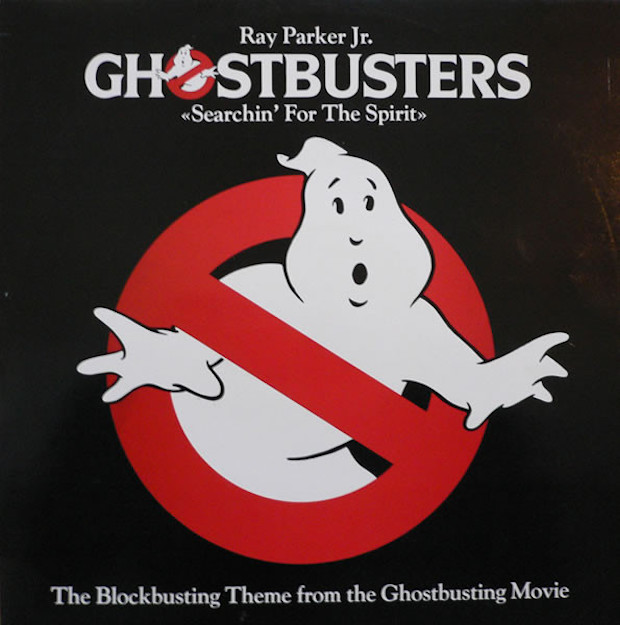 “Ghostbusters” is never a song I never seek out on my own whenever I go mining through the 1980s pop vault, but it is iconic in every sense of the word. Even if you’ve never seen Ghostbusters, you know the answer to the question “Who you gonna call?” There are few marks of cultural staying power greater than that one, and “Ghostbusters” wound up being the only #1 hit of Ray Parker Jr.’s career. Aside from Chazzy Green’s saxophone, Parker sings and plays guitar, Korg Poly-61 and Roland Jupiter-6 synths, a Roland MSQ700 sequencer, drum programming, maracas, cowbells and Simmons drums. Few musicians on this list have ever had such an all-encompassing hand in making a track come to life and “Ghostbusters,” no matter how sentimental or outdated it is, is the epitome of one of film history’s greatest blockbuster eras.
“Ghostbusters” is never a song I never seek out on my own whenever I go mining through the 1980s pop vault, but it is iconic in every sense of the word. Even if you’ve never seen Ghostbusters, you know the answer to the question “Who you gonna call?” There are few marks of cultural staying power greater than that one, and “Ghostbusters” wound up being the only #1 hit of Ray Parker Jr.’s career. Aside from Chazzy Green’s saxophone, Parker sings and plays guitar, Korg Poly-61 and Roland Jupiter-6 synths, a Roland MSQ700 sequencer, drum programming, maracas, cowbells and Simmons drums. Few musicians on this list have ever had such an all-encompassing hand in making a track come to life and “Ghostbusters,” no matter how sentimental or outdated it is, is the epitome of one of film history’s greatest blockbuster eras.
18. Paul McCartney & Michael Jackson: “Say Say Say”
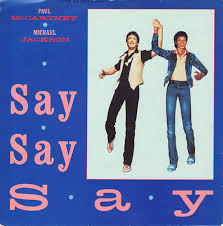 For all the flack that Paul McCartney and Michael Jackson got for their two duets in the 1980s, “Say Say Say” is a pretty damn solid pop song. Of course, record executives making “The Girl is Mine” the lead single off Thriller was an unforgivable mistake, but “Say Say Say” arriving as the lead single from McCartney’s mostly abysmal Pipes of Peace was a genius move. There are some outdated digital components on the track (as is the case with 75% of songs from the era), but McCartney and Jackson had an incredible chemistry together that shines here—and that horn work here is especially slick. Unlike some duets between pop stars, this one doesn’t feel like a Grammy-baiting gimmick. There’s some real firepower in this bubblegum arrangement. “Say Say Say” dominated the charts for four weeks at the end of 1983 and the first two weeks of 1994, and there are far worse ways to ring in a new year.
For all the flack that Paul McCartney and Michael Jackson got for their two duets in the 1980s, “Say Say Say” is a pretty damn solid pop song. Of course, record executives making “The Girl is Mine” the lead single off Thriller was an unforgivable mistake, but “Say Say Say” arriving as the lead single from McCartney’s mostly abysmal Pipes of Peace was a genius move. There are some outdated digital components on the track (as is the case with 75% of songs from the era), but McCartney and Jackson had an incredible chemistry together that shines here—and that horn work here is especially slick. Unlike some duets between pop stars, this one doesn’t feel like a Grammy-baiting gimmick. There’s some real firepower in this bubblegum arrangement. “Say Say Say” dominated the charts for four weeks at the end of 1983 and the first two weeks of 1994, and there are far worse ways to ring in a new year.
17. Culture Club: “Karma Chameleon”
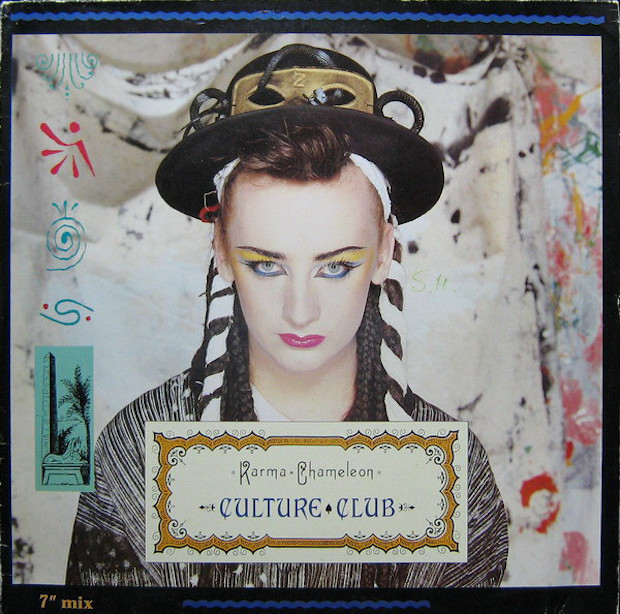 I don’t know anyone who doesn’t know “Karma Chameleon.” It’s a ubiquitous, lifelong part of whatever culture we’re in—and I am okay with that, even if I’m not as up on it in 2024 as I was in, say, 2014. Listening to it now, Boy George’s singing performance hasn’t aged a day (and neither have those perfect background vocals). It’s the closest Culture Club ever came to making a country song (and the band had reservations about recording it because of that), but “Karma Chameleon” is a sticky pop hit that held the top spot on the Hot 100 for three weeks, sold more than 5 million copies around the world and went #1 in 20 countries. It’s hard to argue with the numbers, and it’s even harder to argue with “Karma Chameleon” once Judd Lander’s harmonica pulls through the melody.
I don’t know anyone who doesn’t know “Karma Chameleon.” It’s a ubiquitous, lifelong part of whatever culture we’re in—and I am okay with that, even if I’m not as up on it in 2024 as I was in, say, 2014. Listening to it now, Boy George’s singing performance hasn’t aged a day (and neither have those perfect background vocals). It’s the closest Culture Club ever came to making a country song (and the band had reservations about recording it because of that), but “Karma Chameleon” is a sticky pop hit that held the top spot on the Hot 100 for three weeks, sold more than 5 million copies around the world and went #1 in 20 countries. It’s hard to argue with the numbers, and it’s even harder to argue with “Karma Chameleon” once Judd Lander’s harmonica pulls through the melody.
16. Phil Collins: “Against All Odds (Take a Look at Me Now)”
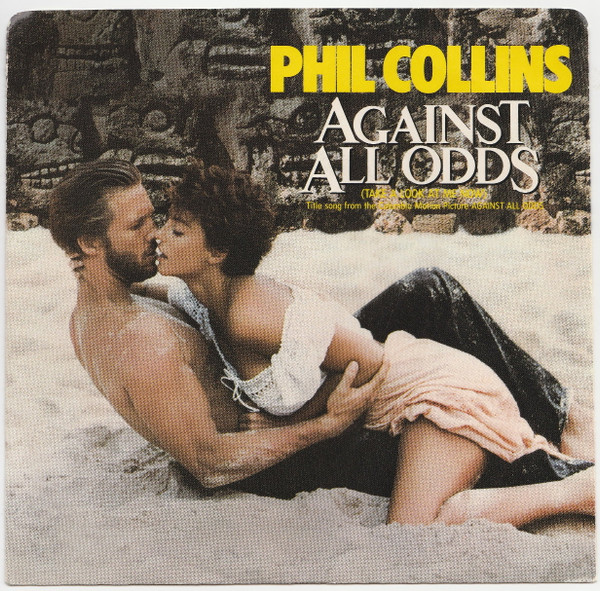 I don’t think there is a solo artist who annoys me more than Phil Collins. I look at what he did with Genesis and I’m satisfied. “Invisible Touch”? Perfect. “No Reply at All”? I’ll take all of that. But Collins’s non-Genesis discography is so hit-or-miss that I rarely return to most of it. “In the Air Tonight” and “I Don’t Care Anymore” are two of the worst pop songs of the 1980s, while “Sussudio” and his collaboration with Philip Bailey, “Easy Lover,” are two of the best. Somewhere in the middle is “Against All Odds (Take a Look at Me Now),” which Collins wrote and recorded for the film of the same name’s soundtrack. What can I say? It’s a power ballad that topped the Hot 100 for three weeks between April and May 1984. It greatly shows off Collins’s vocal chops, but it doesn’t stick out beyond most of the other stadium-ready ballads of the same era. It’s fine, it’s moving, it’s memorable. It works well enough.
I don’t think there is a solo artist who annoys me more than Phil Collins. I look at what he did with Genesis and I’m satisfied. “Invisible Touch”? Perfect. “No Reply at All”? I’ll take all of that. But Collins’s non-Genesis discography is so hit-or-miss that I rarely return to most of it. “In the Air Tonight” and “I Don’t Care Anymore” are two of the worst pop songs of the 1980s, while “Sussudio” and his collaboration with Philip Bailey, “Easy Lover,” are two of the best. Somewhere in the middle is “Against All Odds (Take a Look at Me Now),” which Collins wrote and recorded for the film of the same name’s soundtrack. What can I say? It’s a power ballad that topped the Hot 100 for three weeks between April and May 1984. It greatly shows off Collins’s vocal chops, but it doesn’t stick out beyond most of the other stadium-ready ballads of the same era. It’s fine, it’s moving, it’s memorable. It works well enough.
15. Billy Ocean: “Caribbean Queen (No More Love on the Run)”
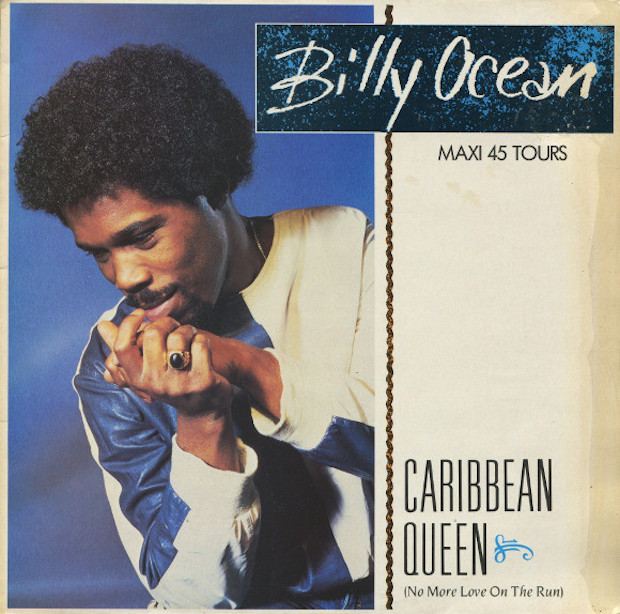 I have not always been a Billy Ocean fan. In fact, I used to think that “Caribbean Queen (No More Love on the Run)” was one of the worst songs of the 1980s. But I’ve sat with this track for a long time; thanks to the dial on my mom’s car radio always being set to the local ‘80s station, “Caribbean Queen” has been in my lineage of listening for a long, long time. It’s a good song—really good, even! I mean, this is funk-pop royalty and it was awarded a Grammy for Best Male R&B Vocal Performance in 1985 (Ocean was the first-ever Brit to win that award). It’s a proper example of disco still reverberating into the decade after its demolition, and it’s probably one of the best songs Ocean ever released (I think I prefer “Loverboy,” at the end of the day).
I have not always been a Billy Ocean fan. In fact, I used to think that “Caribbean Queen (No More Love on the Run)” was one of the worst songs of the 1980s. But I’ve sat with this track for a long time; thanks to the dial on my mom’s car radio always being set to the local ‘80s station, “Caribbean Queen” has been in my lineage of listening for a long, long time. It’s a good song—really good, even! I mean, this is funk-pop royalty and it was awarded a Grammy for Best Male R&B Vocal Performance in 1985 (Ocean was the first-ever Brit to win that award). It’s a proper example of disco still reverberating into the decade after its demolition, and it’s probably one of the best songs Ocean ever released (I think I prefer “Loverboy,” at the end of the day).
14. John Waite: “Missing You”
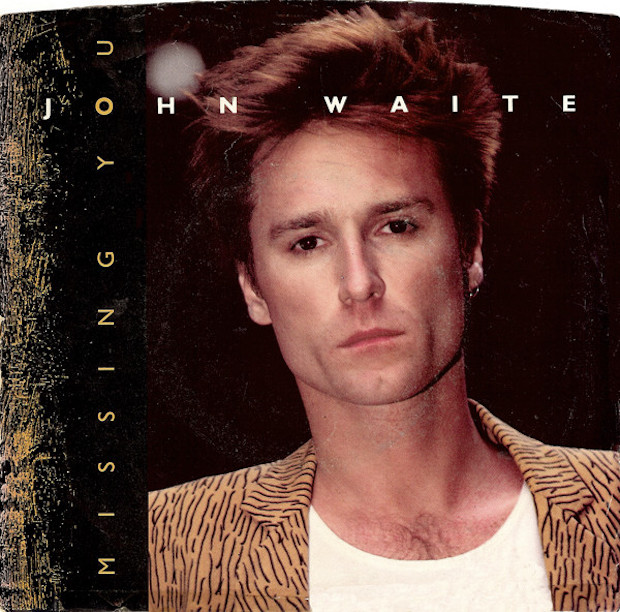 The only 1984 #1 to only hold the top spot for a single week, “Missing You” is one of my favorite songs on this list—if only for how underloved it is in the context of the other 19 tracks. I didn’t grow up in the 1980s, but it’s, to me, the least popular entry on this list (it’s only competition being Deniece Williams, probably). The song is still ubiquitous, though, having made appearances in Selena, Warm Bodies, Grand Theft Auto: Vice City and 22 Jump Street. The first time I ever heard about it was when Tyler Hilton’s cover of it played during an episode of One Tree Hill. “Missing You” is so good! I love John Waite and wish he’d had more hit songs. After “Missing You” spent a week at #1, Waite would only crack the Top 40 again one more time, when the follow-up single “Tears” peaked at #37. He’d score a Grammy nomination for Best Pop Vocal Performance Male, and he’d have probably had a shot at winning if a man named Phil Collins didn’t exist.
The only 1984 #1 to only hold the top spot for a single week, “Missing You” is one of my favorite songs on this list—if only for how underloved it is in the context of the other 19 tracks. I didn’t grow up in the 1980s, but it’s, to me, the least popular entry on this list (it’s only competition being Deniece Williams, probably). The song is still ubiquitous, though, having made appearances in Selena, Warm Bodies, Grand Theft Auto: Vice City and 22 Jump Street. The first time I ever heard about it was when Tyler Hilton’s cover of it played during an episode of One Tree Hill. “Missing You” is so good! I love John Waite and wish he’d had more hit songs. After “Missing You” spent a week at #1, Waite would only crack the Top 40 again one more time, when the follow-up single “Tears” peaked at #37. He’d score a Grammy nomination for Best Pop Vocal Performance Male, and he’d have probably had a shot at winning if a man named Phil Collins didn’t exist.
13. Stevie Wonder: “I Just Called to Say I Love You”
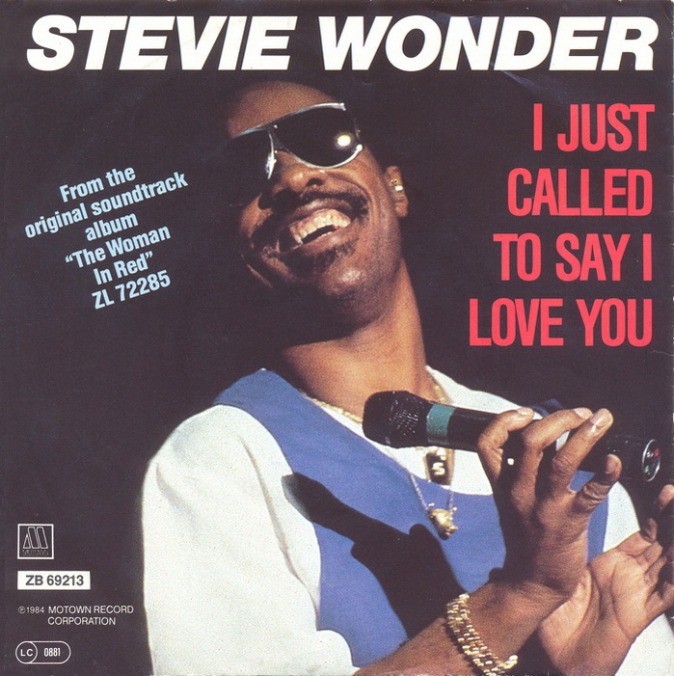 If it wasn’t for “Ebony & Ivory,” “I Just Called to Say I Love You” would be Stevie Wonder’s worst #1 hit—but remember, this is Stevie Wonder we’re talking about. His worst song is better than almost any other artist’s best song. Nearly a decade after taking over the charts with “I Wish” and “Sir Duke,” Stevie was fully in soul-pop mode. “I Just Called to Say I Love You” is bland, if we’re considering it in the lineage of Stevie Wonder’s big, near-bulletproof catalog. But, in the context of 1984 and its use in The Woman in Red, it’s a fantastic little keyboard ballad. Stevie, as he often did, played every instrument and there’s something about that Oberheim DMX drum machine that still sounds so crisp 40 years later. I think you can trace a lot of modern-day synth-pop back to a song like this. “I Just Called to Say I Love You” might very well be the only track on this list that never spent time out of fashion.
If it wasn’t for “Ebony & Ivory,” “I Just Called to Say I Love You” would be Stevie Wonder’s worst #1 hit—but remember, this is Stevie Wonder we’re talking about. His worst song is better than almost any other artist’s best song. Nearly a decade after taking over the charts with “I Wish” and “Sir Duke,” Stevie was fully in soul-pop mode. “I Just Called to Say I Love You” is bland, if we’re considering it in the lineage of Stevie Wonder’s big, near-bulletproof catalog. But, in the context of 1984 and its use in The Woman in Red, it’s a fantastic little keyboard ballad. Stevie, as he often did, played every instrument and there’s something about that Oberheim DMX drum machine that still sounds so crisp 40 years later. I think you can trace a lot of modern-day synth-pop back to a song like this. “I Just Called to Say I Love You” might very well be the only track on this list that never spent time out of fashion.
12. Van Halen: “Jump”
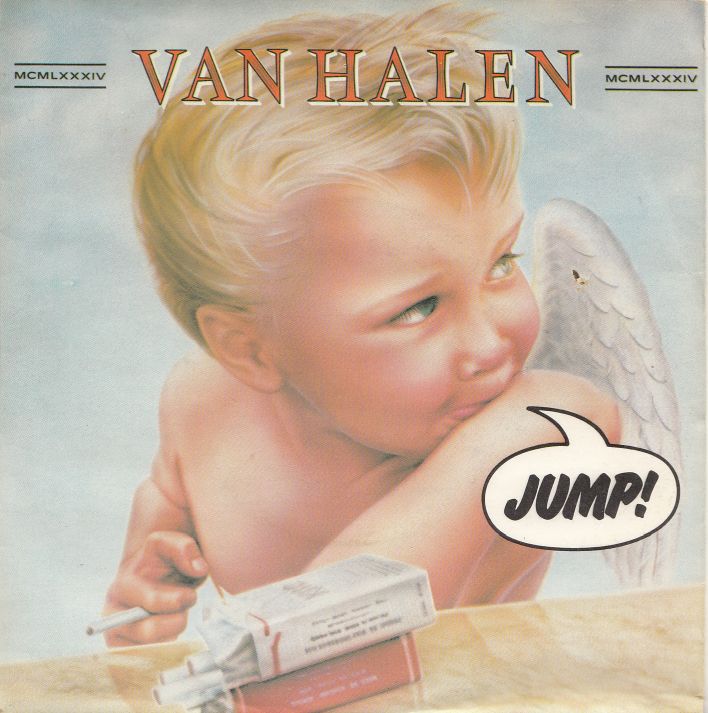 I love that Van Halen’s most-successful song features a synth-rock arrangement. Considering how they created their own rock ‘n’ roll template on their self-titled debut in 1978, it’s funny what six years can do to a band. The glam metal gods kicked off the promo cycle for 1984 with “Jump,” and we remember it not for Eddie Van Halen’s killer middle-point guitar solo, or for David Lee Roth’s impassioned lead vocal, but for Eddie’s Oberheim OB-Xa keyboard—and it might just be the most recognizable synthesizer solo in the history of mainstream music. The story goes that Eddie ripped off the synth part from Hall & Oates’ “Kiss On My List” and turned it into “Jump.” I’d say he made out pretty well on that decision. Few stylistic departures have ever been so immediately successful, as “Jump” topped the Hot 100 for five consecutive weeks for all of March before “Footloose” unseated it.
I love that Van Halen’s most-successful song features a synth-rock arrangement. Considering how they created their own rock ‘n’ roll template on their self-titled debut in 1978, it’s funny what six years can do to a band. The glam metal gods kicked off the promo cycle for 1984 with “Jump,” and we remember it not for Eddie Van Halen’s killer middle-point guitar solo, or for David Lee Roth’s impassioned lead vocal, but for Eddie’s Oberheim OB-Xa keyboard—and it might just be the most recognizable synthesizer solo in the history of mainstream music. The story goes that Eddie ripped off the synth part from Hall & Oates’ “Kiss On My List” and turned it into “Jump.” I’d say he made out pretty well on that decision. Few stylistic departures have ever been so immediately successful, as “Jump” topped the Hot 100 for five consecutive weeks for all of March before “Footloose” unseated it.
11. Kenny Loggins: “Footloose”
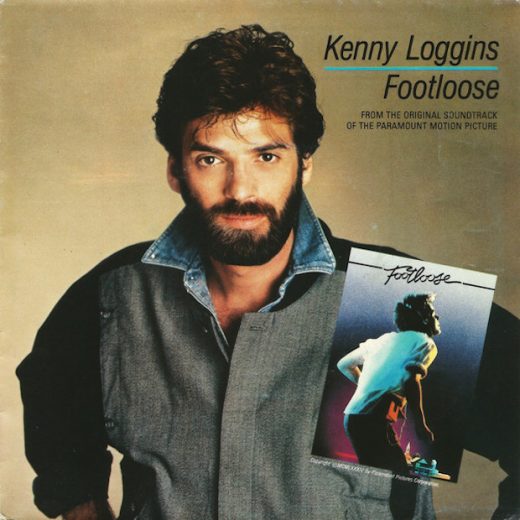 I danced to “Footloose” at a wedding recently, and it was electric. I want whatever Kenny Loggins was taking when he cooked that song up. The ‘80s were the era of the original movie soundtrack for good reason; I don’t know if any movie theme song is better than “Footloose.” (Well, “St. Elmo’s Fire (Man in Motion)” is better, but that’s a track we’ll rank in 2025.) As a song, I still prefer Loggins’s contribution to Caddyshack, “I’m Alright,” but no songwriter 40 years ago changed the landscape of film quite like him. Oh, you wrote the theme songs for both Footloose and Top Gun within two years of each other? Okay, word. The only problem with “Footloose” is that it’s not even the best song from Footloose (we’ll get to that in a moment); otherwise, it’s a perfect pop-rock song and should have won the Best Original Song Academy Award instead of “I Just Called to Say I Love You” (sorry, Stevie). I could watch Kevin Bacon dance to it forever.
I danced to “Footloose” at a wedding recently, and it was electric. I want whatever Kenny Loggins was taking when he cooked that song up. The ‘80s were the era of the original movie soundtrack for good reason; I don’t know if any movie theme song is better than “Footloose.” (Well, “St. Elmo’s Fire (Man in Motion)” is better, but that’s a track we’ll rank in 2025.) As a song, I still prefer Loggins’s contribution to Caddyshack, “I’m Alright,” but no songwriter 40 years ago changed the landscape of film quite like him. Oh, you wrote the theme songs for both Footloose and Top Gun within two years of each other? Okay, word. The only problem with “Footloose” is that it’s not even the best song from Footloose (we’ll get to that in a moment); otherwise, it’s a perfect pop-rock song and should have won the Best Original Song Academy Award instead of “I Just Called to Say I Love You” (sorry, Stevie). I could watch Kevin Bacon dance to it forever.
10. Yes: “Owner of a Lonely Heart”
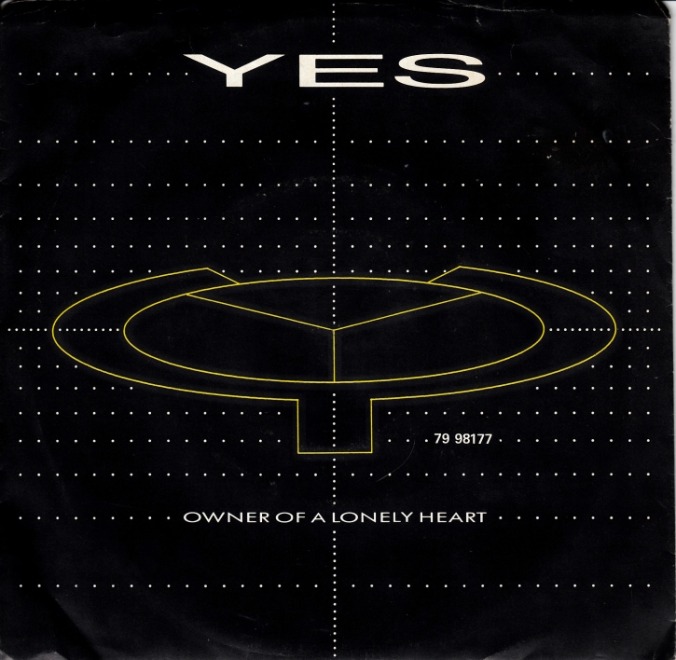 Sure, this song quivers in the presence of most of Yes’ catalog from 10 years prior. But, let’s not let prog rock origins skew our ability to enjoy a perfectly-made dance-rock song! “Owner of a Lonely Heart” introduced Yes to a new audience and a new generation in 1984, and its fuzzy, new-wavey melody paired with the drum-and-bass that’d slowly begun taking the pop world by storm. Chris Squire’s scratching basslines, Trevor Rabin’s Synclavier and Fairlight CMI synths, Jon Anderson singing lead and backing harmonies—it’s a recipe for an earworm recognizable in every language. Producer Trevor Horn said it was one of the best songs he ever worked on, too. Yes weren’t the prog-rock heroes of their youth anymore when 1984 came around, but they weren’t making chintzy pop throwaways, either. “Owner of a Lonely Heart” stands the test of time; it’s a sell-out stylistic departure that’s far more auspicious and enjoyable than Van Halen’s.
Sure, this song quivers in the presence of most of Yes’ catalog from 10 years prior. But, let’s not let prog rock origins skew our ability to enjoy a perfectly-made dance-rock song! “Owner of a Lonely Heart” introduced Yes to a new audience and a new generation in 1984, and its fuzzy, new-wavey melody paired with the drum-and-bass that’d slowly begun taking the pop world by storm. Chris Squire’s scratching basslines, Trevor Rabin’s Synclavier and Fairlight CMI synths, Jon Anderson singing lead and backing harmonies—it’s a recipe for an earworm recognizable in every language. Producer Trevor Horn said it was one of the best songs he ever worked on, too. Yes weren’t the prog-rock heroes of their youth anymore when 1984 came around, but they weren’t making chintzy pop throwaways, either. “Owner of a Lonely Heart” stands the test of time; it’s a sell-out stylistic departure that’s far more auspicious and enjoyable than Van Halen’s.
9. Cyndi Lauper: “Time After Time”
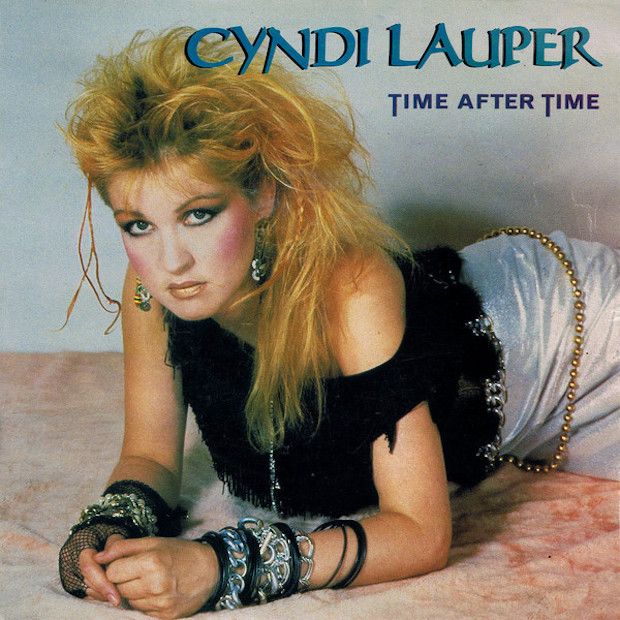 After “Girls Just Want to Have Fun” crashed out at #15 on the Hot 100 in 1983, that travesty was made up for when “Time After Time” surged to #1 and turned Cyndi Lauper into a superstar and her debut album, She’s So Unusual, into one of the greatest artist introductions ever. “Time After Time” is one of the best ballads ever, and there’s really no argument to be made about it otherwise. That chorus—“If you’re lost, you can look and you will find me, time after time / If you fall, I will catch you, I’ll be waiting”—is gentle, simple and mountain-moving all at once. “Time After Time” was a departure from the bubbly, neon-covered “Girls Just Want to Have Fun”—a startling composition that’s as undeniable as it is still discoverable. It’s one of those tunes that every generation will put on a pedestal, and for good reason. They don’t make ‘em like Cyndi Lauper anymore. “Time After Time” is sentimentality personified into a musical masterpiece, one of the most significant pop contributions of any era.
After “Girls Just Want to Have Fun” crashed out at #15 on the Hot 100 in 1983, that travesty was made up for when “Time After Time” surged to #1 and turned Cyndi Lauper into a superstar and her debut album, She’s So Unusual, into one of the greatest artist introductions ever. “Time After Time” is one of the best ballads ever, and there’s really no argument to be made about it otherwise. That chorus—“If you’re lost, you can look and you will find me, time after time / If you fall, I will catch you, I’ll be waiting”—is gentle, simple and mountain-moving all at once. “Time After Time” was a departure from the bubbly, neon-covered “Girls Just Want to Have Fun”—a startling composition that’s as undeniable as it is still discoverable. It’s one of those tunes that every generation will put on a pedestal, and for good reason. They don’t make ‘em like Cyndi Lauper anymore. “Time After Time” is sentimentality personified into a musical masterpiece, one of the most significant pop contributions of any era.
8. Daryl Hall & John Oates: “Out of Touch”
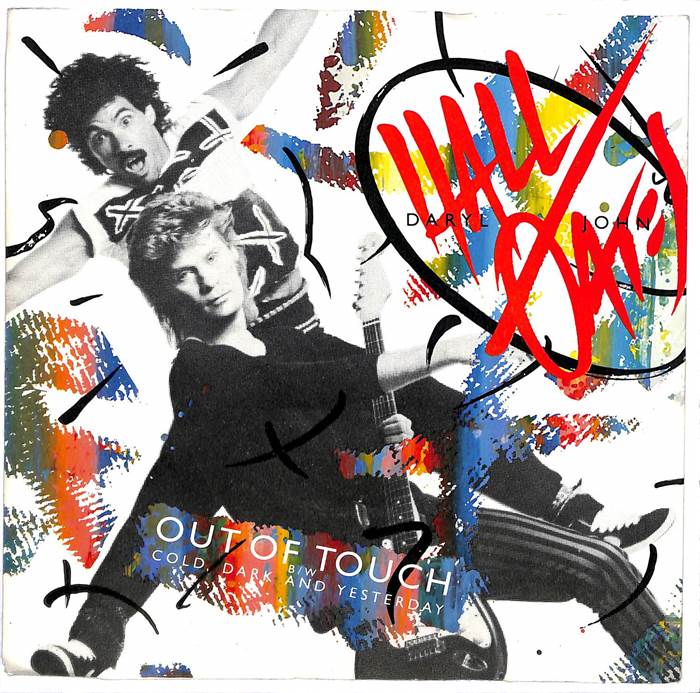 I probably listened to “Out of Touch” 300 times this year. It’s Platinum in my household and always will be. We know very well that Daryl Hall and John Oates were, for about nine years, the greatest hit-makers in rock ‘n’ roll—nabbing six #1s and 15 Top 10s in that period alone. The last of the bunch, “Out of Touch,” was their 14th consecutive Top 40 single and took up the mantle on the Hot 100 in December 1985 and remained there for two weeks before the Queen of Pop made her entrance. “Out of Touch” is one of my favorite songs ever, a perfect synth-pop benchmark that any other band would be grateful to have at the top of their catalog—making the fact that it’s probably the fourth, fifth or sixth-best Hall & Oates song all the more impressive. To me, “Out of Touch” is a good example of Hall & Oates’ consistency as a band. It’s not flashy, nor is it ground-breaking, but it’s so well made that anyone can step into the melody and fall in love with it. What more can be said?
I probably listened to “Out of Touch” 300 times this year. It’s Platinum in my household and always will be. We know very well that Daryl Hall and John Oates were, for about nine years, the greatest hit-makers in rock ‘n’ roll—nabbing six #1s and 15 Top 10s in that period alone. The last of the bunch, “Out of Touch,” was their 14th consecutive Top 40 single and took up the mantle on the Hot 100 in December 1985 and remained there for two weeks before the Queen of Pop made her entrance. “Out of Touch” is one of my favorite songs ever, a perfect synth-pop benchmark that any other band would be grateful to have at the top of their catalog—making the fact that it’s probably the fourth, fifth or sixth-best Hall & Oates song all the more impressive. To me, “Out of Touch” is a good example of Hall & Oates’ consistency as a band. It’s not flashy, nor is it ground-breaking, but it’s so well made that anyone can step into the melody and fall in love with it. What more can be said?
7. Tina Turner: “What’s Love Got to Do With It”
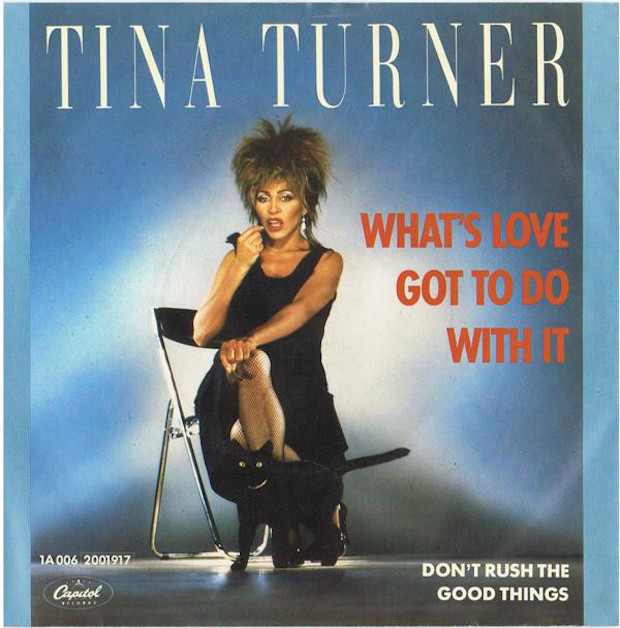 A #1 hit for three weeks in-between Ray Parker Jr. and John Waite, Tina Turner scored her only chart-topping song with “What’s Love Got to Do With It”—a single that sold more than 2 million copies globally and won both Record of the Year and Song of the Year at the Grammys in 1985. It’s one of the greatest songs ever, three minutes and 48 seconds of soulful, sophisti-pop perfection captured on tape by producer Terry Britten and engineer/mixer John Hudson. If there was ever someone who matched Aretha Franklin’s talent, eccentricity and star-power in their lifetime, it was Tina Turner. She rewrote her entire career path after “What’s Love Got to Do With It” came out, and that “Who needs a heart when a heart can’t be broken?” line reverberates in music history like few others. It vaulted her album, Private Dancer, into the echelons of the 1980s, put Tina on the mic with David Bowie and turned her into one of the most successful female musicians of the decade, etching her Queen of Rock ‘n’ Roll title into the history books forever.
A #1 hit for three weeks in-between Ray Parker Jr. and John Waite, Tina Turner scored her only chart-topping song with “What’s Love Got to Do With It”—a single that sold more than 2 million copies globally and won both Record of the Year and Song of the Year at the Grammys in 1985. It’s one of the greatest songs ever, three minutes and 48 seconds of soulful, sophisti-pop perfection captured on tape by producer Terry Britten and engineer/mixer John Hudson. If there was ever someone who matched Aretha Franklin’s talent, eccentricity and star-power in their lifetime, it was Tina Turner. She rewrote her entire career path after “What’s Love Got to Do With It” came out, and that “Who needs a heart when a heart can’t be broken?” line reverberates in music history like few others. It vaulted her album, Private Dancer, into the echelons of the 1980s, put Tina on the mic with David Bowie and turned her into one of the most successful female musicians of the decade, etching her Queen of Rock ‘n’ Roll title into the history books forever.
6. Prince & the Revolution: “Let’s Go Crazy”
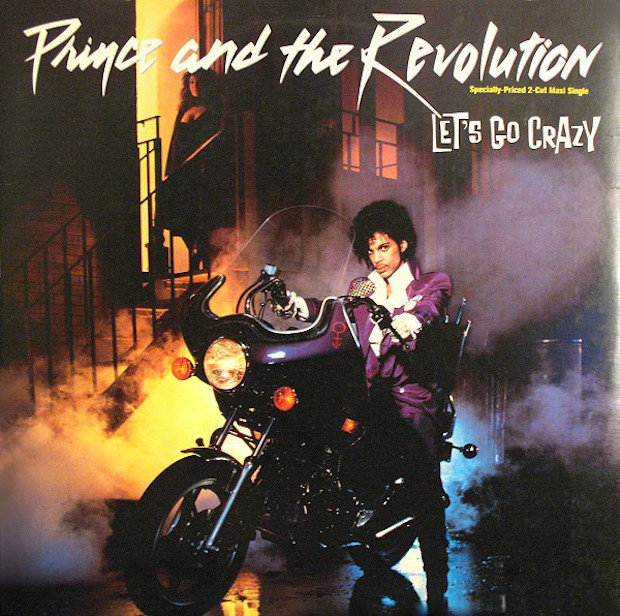 Prince’s second #1 hit of 1984, “Let’s Go Crazy” is funk-rock turned to an 11. From his eulogy for “this thing called life” to that thick, heavy lead guitar, to that combination of Bobby Z.’s Linn LM-1-programmed drums and Lisa Coleman’s Oberheim OB-SX and Matt Fink’s Oberheim OB-Xa synthesizers, to Coleman and Wendy Melvoin’s backing vocals being recognizable from a mile away, “Let’s Go Crazy” is Prince at his more electric and balls-to-the-wall—summoning religious imagery of the “afterworld,” mind-melting riffs and one piercing shout of “TAKE ME AWAY!” all in four minutes. I think Prince was right: Whenever I listen to “Let’s Go Crazy,” I can always see the sun.
Prince’s second #1 hit of 1984, “Let’s Go Crazy” is funk-rock turned to an 11. From his eulogy for “this thing called life” to that thick, heavy lead guitar, to that combination of Bobby Z.’s Linn LM-1-programmed drums and Lisa Coleman’s Oberheim OB-SX and Matt Fink’s Oberheim OB-Xa synthesizers, to Coleman and Wendy Melvoin’s backing vocals being recognizable from a mile away, “Let’s Go Crazy” is Prince at his more electric and balls-to-the-wall—summoning religious imagery of the “afterworld,” mind-melting riffs and one piercing shout of “TAKE ME AWAY!” all in four minutes. I think Prince was right: Whenever I listen to “Let’s Go Crazy,” I can always see the sun.
5. Deniece Williams: “Let’s Hear It for the Boy”
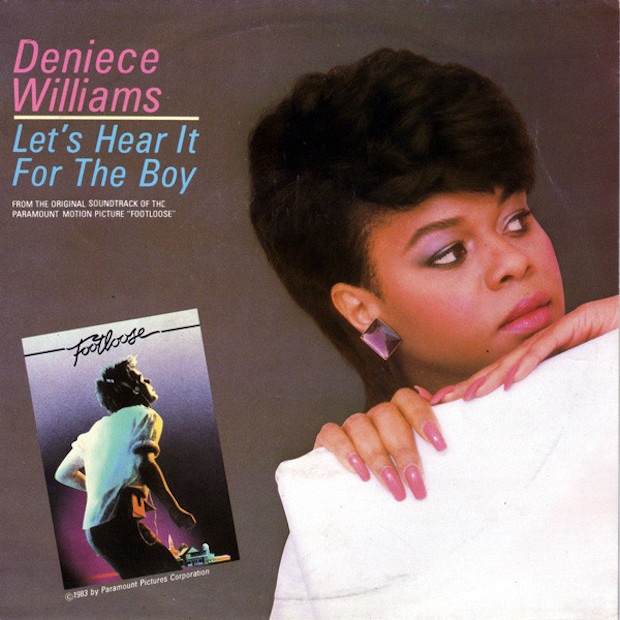 While Kenny Loggins had his thumb on the pulse of 1980s film soundtracks (Caddyshack, Top Gun, Footloose), it’s Deniece Williams’s contribution to Footloose that outshines everything Loggins did that whole decade. “Let’s Hear It for the Boy” is one of those tunes that is such pop perfection that you might not even know it was written for a film in the first place. But songwriters Tom Snow and Dean Pitchford found their formula, and Williams carried it out perfectly. “Let’s Hear It for the Boy” glues itself to stardom with an earworm chorus and some serious hooks. “Maybe he’s no Romeo, but he’s my lovin’ one-man show,” Williams cries out, mastering just one of the song’s dozen singalong lines. A lot of soundtrack songs get lost to the sands of time as years pass, but “Let’s Hear It for the Boy” and its post-disco, synthesizer-driven melody is still just as sweet and danceable now as it was 40 years ago.
While Kenny Loggins had his thumb on the pulse of 1980s film soundtracks (Caddyshack, Top Gun, Footloose), it’s Deniece Williams’s contribution to Footloose that outshines everything Loggins did that whole decade. “Let’s Hear It for the Boy” is one of those tunes that is such pop perfection that you might not even know it was written for a film in the first place. But songwriters Tom Snow and Dean Pitchford found their formula, and Williams carried it out perfectly. “Let’s Hear It for the Boy” glues itself to stardom with an earworm chorus and some serious hooks. “Maybe he’s no Romeo, but he’s my lovin’ one-man show,” Williams cries out, mastering just one of the song’s dozen singalong lines. A lot of soundtrack songs get lost to the sands of time as years pass, but “Let’s Hear It for the Boy” and its post-disco, synthesizer-driven melody is still just as sweet and danceable now as it was 40 years ago.
4. Wham!: “Wake Me Up Before You Go-Go”
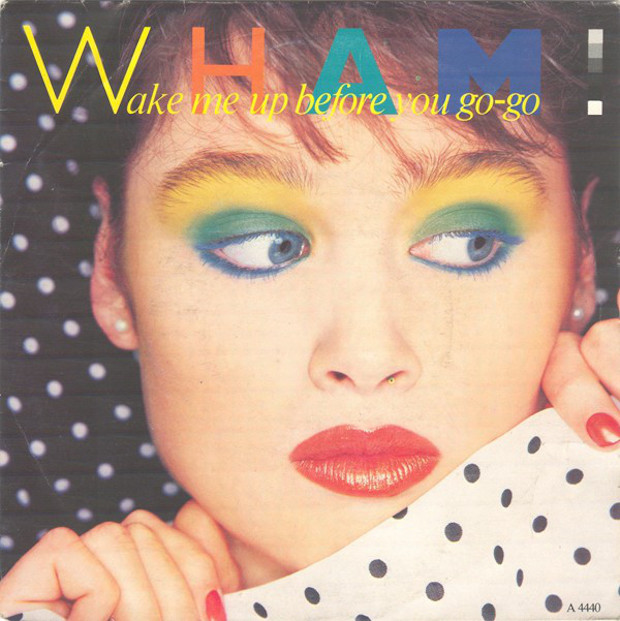 CHOOSE LIFE! Listen, “Wake Me Up Before You Go-Go” is one of the best pop songs ever, no matter the era. George Michael and Andrew Ridgeley could have quit after putting this out and still be regarded as one of the greatest duos to ever do it. Hearing this song for the first time in grade school and begging my mom to add it to my iPod Shuffle library was a canon event for me. “Wake Me Up Before You Go-Go” is a Motown song performed by a couple of white Englishmen—a formula that rarely, if ever, works. But “Wake Me Up Before You Go-Go” broke big 40 years ago, topping nearly 20 different charts across the globe and selling over 2 million copies. Wham! would follow up its success by dropping five Top 5 hits in a row, including two #1s (“Careless Whisper” and “Everything She Wants”). Few singles have turned a pop act into bonafide generational heroes, but “Wake Me Up Before You Go-Go” and its cavalry of synths and horns punctured through the noise and excess of music’s busiest decade and turned Michael and Ridgeley into legends. As a wise man once said: “Jitterbug.”
CHOOSE LIFE! Listen, “Wake Me Up Before You Go-Go” is one of the best pop songs ever, no matter the era. George Michael and Andrew Ridgeley could have quit after putting this out and still be regarded as one of the greatest duos to ever do it. Hearing this song for the first time in grade school and begging my mom to add it to my iPod Shuffle library was a canon event for me. “Wake Me Up Before You Go-Go” is a Motown song performed by a couple of white Englishmen—a formula that rarely, if ever, works. But “Wake Me Up Before You Go-Go” broke big 40 years ago, topping nearly 20 different charts across the globe and selling over 2 million copies. Wham! would follow up its success by dropping five Top 5 hits in a row, including two #1s (“Careless Whisper” and “Everything She Wants”). Few singles have turned a pop act into bonafide generational heroes, but “Wake Me Up Before You Go-Go” and its cavalry of synths and horns punctured through the noise and excess of music’s busiest decade and turned Michael and Ridgeley into legends. As a wise man once said: “Jitterbug.”
3. Duran Duran: “The Reflex”
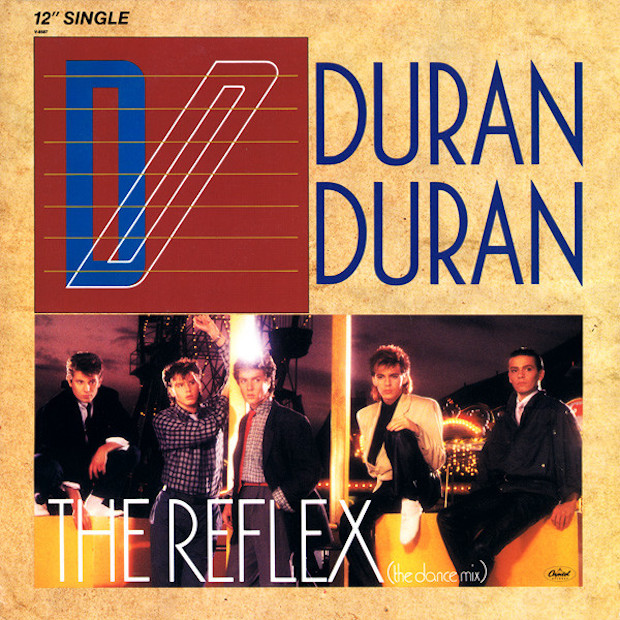 If I was alive in 1984 and dictated the Hot 100 chart, I would have simply made “The Reflex” a #1 hit for as long as possible. In reality, it probably would have been had a song called “When Doves Cry” not unseated it from the top spot. I wish I could have been in high school when “The Reflex” became a mid-summer #1 hit. What a time to be alive that must have been. Duran Duran had had success prior to “The Reflex,” as “Hungry Like the Wolf,” “Is There Something I Should Know?” and “Union of the Snake” all reached the Top 5, but the final single from Seven and the Ragged Tiger was their first (and most-deserving) smash. A dance-pop number that could sink even the most pretentious synth-heads’ tastes, “The Reflex” is Euro-funk lit on fire by Simon Le Bon’s infectious vocals. I could listen to only this song for the rest of my life.
If I was alive in 1984 and dictated the Hot 100 chart, I would have simply made “The Reflex” a #1 hit for as long as possible. In reality, it probably would have been had a song called “When Doves Cry” not unseated it from the top spot. I wish I could have been in high school when “The Reflex” became a mid-summer #1 hit. What a time to be alive that must have been. Duran Duran had had success prior to “The Reflex,” as “Hungry Like the Wolf,” “Is There Something I Should Know?” and “Union of the Snake” all reached the Top 5, but the final single from Seven and the Ragged Tiger was their first (and most-deserving) smash. A dance-pop number that could sink even the most pretentious synth-heads’ tastes, “The Reflex” is Euro-funk lit on fire by Simon Le Bon’s infectious vocals. I could listen to only this song for the rest of my life.
2. Madonna: “Like a Virgin”
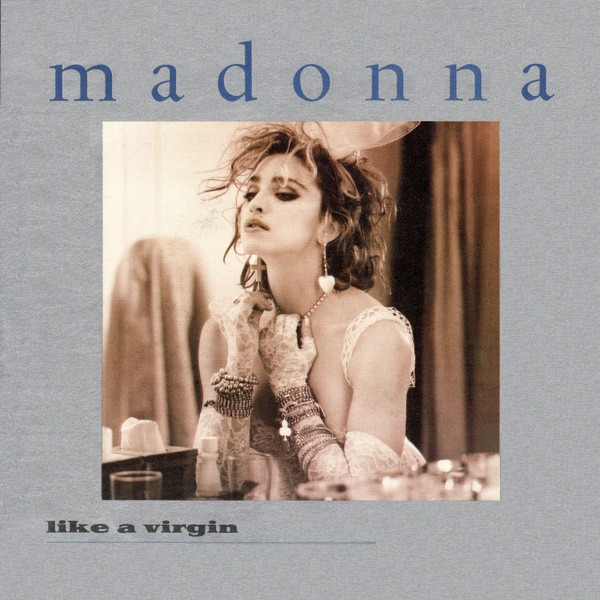 Like a Virgin and its “feels so good inside” proverb is, maybe, tame in retrospect, but we can never abandon the truth: It very well might be one of the most consequential and informative albums in the history of our ever-changing standard. Womanhood in America changed the moment Madonna dropped the title track on Halloween, just a month after she sang it at the VMAs—where she emerged from a 17-foot tall wedding cake wearing a belt buckle with “BOY TOY” plastered across the buckle and, after stepping out of one of her high-heels and diving onto the floor to cover up the malfunction, she flashed her underwear at the cameras and flipped the wide-eyed world into a landmine of uncharted desire. Culture shifts at award shows are few and far between nowadays, but “Like a Virgin” was a historical burst of access. It was Madonna’s first #1 hit and remained there for six weeks, closing out 1984 and ushering in 1985 all the same. By the time “Like a Virgin” arrived, gender became more complex and fluid, sexuality found a nuanced identity—all of this, of course, had been present in the underground for decades, but Madonna was able to hide the pill in applesauce and put it down the throats of detractors and censors.
Like a Virgin and its “feels so good inside” proverb is, maybe, tame in retrospect, but we can never abandon the truth: It very well might be one of the most consequential and informative albums in the history of our ever-changing standard. Womanhood in America changed the moment Madonna dropped the title track on Halloween, just a month after she sang it at the VMAs—where she emerged from a 17-foot tall wedding cake wearing a belt buckle with “BOY TOY” plastered across the buckle and, after stepping out of one of her high-heels and diving onto the floor to cover up the malfunction, she flashed her underwear at the cameras and flipped the wide-eyed world into a landmine of uncharted desire. Culture shifts at award shows are few and far between nowadays, but “Like a Virgin” was a historical burst of access. It was Madonna’s first #1 hit and remained there for six weeks, closing out 1984 and ushering in 1985 all the same. By the time “Like a Virgin” arrived, gender became more complex and fluid, sexuality found a nuanced identity—all of this, of course, had been present in the underground for decades, but Madonna was able to hide the pill in applesauce and put it down the throats of detractors and censors.
1. Prince: “When Doves Cry”
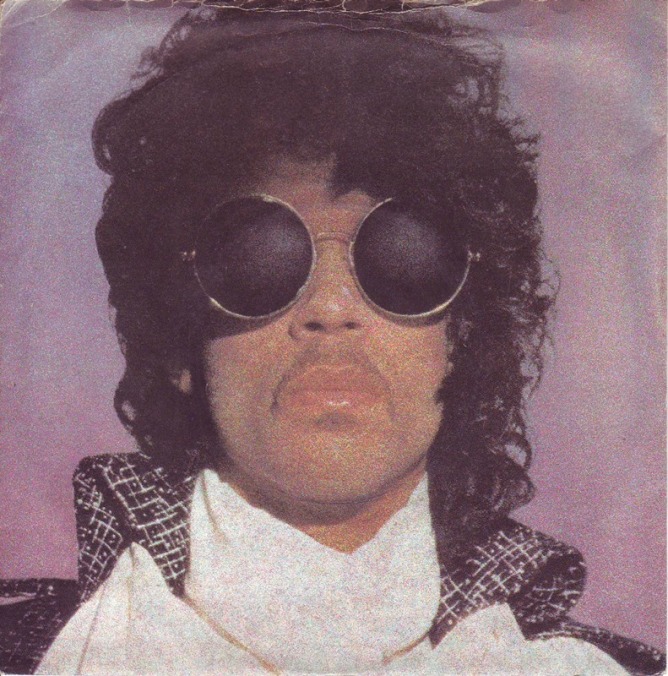 Pick any song from the Purple Rain soundtrack and you’ll have a winner. Whether it’s the title track or “Let’s Go Crazy” or “I Would Die 4 U,” the album remains so good that it transcends the confines of film music altogether. But “When Doves Cry” is not only one of the greatest songs written for a movie or one of the greatest songs of the 1980s, it’s one of the greatest songs period. The story goes that Purple Rain director Albert Magnoli wanted Prince to pen something that would mirror a love affair theme, and Prince went on to find inspiration in his own relationship with Susan Moonsie and use it as a backbone for the track’s narrative. “When Doves Cry” would go on to be Prince’s first #1 hit and earn a Platinum certification from the RIAA—along with a year-end top placement on Billboard’s Year-End Hot 100 singles list. Few musicians have cemented their legacy with a performance as visceral and perfect as Prince did on Purple Rain—and he had “When Doves Cry” to thank for that.
Pick any song from the Purple Rain soundtrack and you’ll have a winner. Whether it’s the title track or “Let’s Go Crazy” or “I Would Die 4 U,” the album remains so good that it transcends the confines of film music altogether. But “When Doves Cry” is not only one of the greatest songs written for a movie or one of the greatest songs of the 1980s, it’s one of the greatest songs period. The story goes that Purple Rain director Albert Magnoli wanted Prince to pen something that would mirror a love affair theme, and Prince went on to find inspiration in his own relationship with Susan Moonsie and use it as a backbone for the track’s narrative. “When Doves Cry” would go on to be Prince’s first #1 hit and earn a Platinum certification from the RIAA—along with a year-end top placement on Billboard’s Year-End Hot 100 singles list. Few musicians have cemented their legacy with a performance as visceral and perfect as Prince did on Purple Rain—and he had “When Doves Cry” to thank for that.


